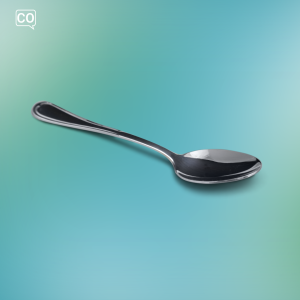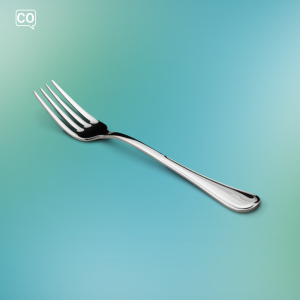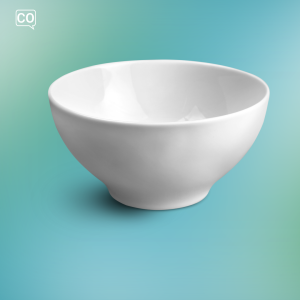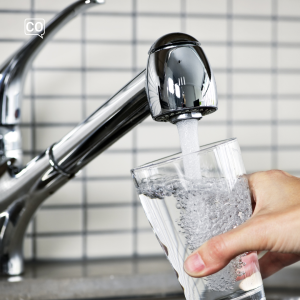This lesson introduces essential French tableware vocabulary like l'assiette (plate) and la fourchette (fork), plus useful location adverbs such as devant (in front of) and à côté de (next to) to describe setting a table.
Listening & reading materials
Practice vocabulary in context with real materials.
Vocabulary (15) Share Copied!
Exercises Share Copied!
These exercises can be done together during conversation lessons or as homework.
Exercise 1: Reorder sentences
Instruction: Make correct sentences and translate.
Exercise 2: Match a word
Instruction: Match the translations
Exercise 3: Cluster the words
Instruction: Sort the words into two categories based on whether they designate objects for setting the table or actions related to dishwashing.
Objets pour dresser la table
Actions liées à la vaisselle
Exercise 4: Translate and use in a sentence
Instruction: Pick a word, translated and use the word in a sentence or dialogue.
1
La tasse
The cup
2
La fourchette
The fork
3
Le couteau
The knife
4
Les couverts
Cutlery
5
L'assiette
The plate
Exercice 5: Conversation exercise
Instruction:
- Ask to pass any item you need. (Ask to pass any item you need.)
- Name all tableware and the usage. (Name all tableware and the usage.)
Teaching guidelines +/- 10 minutes
Example phrases:
|
Le bol avec du sucre est sur la table. The bowl with sugar is on the table. |
|
La cuillère est dans le bol. The spoon is in the bowl. |
|
Peux-tu mettre la nappe sur la table ? Can you put the tablecloth on the table? |
|
Le verre est rempli de jus d'orange. The glass is filled with orange juice. |
|
L'assiette est remplie de croissants. The plate is filled with croissants. |
|
Peux-tu me passer un verre d'eau f Can you pass me a glass of water? |
|
Voulez-vous une tasse de café ou une tasse de thé ? Do you want a cup of coffee or a cup of tea? |
|
La fourchette, le couteau et la cuillère sont à côté de l'assiette. The fork, knife, and spoon are next to the plate. |
| ... |
Exercise 6: Dialogue Cards
Instruction: Select a situation and practice the conversation with your teacher or fellow students.
Exercise 7: Multiple Choice
Instruction: Choose the correct solution
1. Je ___ les assiettes avant de mettre la table.
(I ___ the plates before setting the table.)2. Tu ___ les légumes pour la salade.
(You ___ the vegetables for the salad.)3. Il est en train de ___ les verres à côté de l'évier.
(He is ___ the glasses next to the sink.)4. Nous ___ les couverts devant la fenêtre.
(We ___ the cutlery in front of the window.)Exercise 8: Setting the table before the guests arrive
Instruction:
Verb Tables
Inviter - Invite
Présent
- j'invite
- tu invites
- il/elle invite
- nous invitons
- vous invitez
- ils/elles invitent
Laver - Wash
Présent
- je lave
- tu laves
- il/elle lave
- nous lavons
- vous lavez
- ils/elles lavent
Couper - Cut
Présent
- je coupe
- tu coupes
- il/elle coupe
- nous coupons
- vous coupez
- ils/elles coupent
Mettre - Set
Présent
- je mets
- tu mets
- il/elle met
- nous mettons
- vous mettez
- ils/elles mettent
Essuyer - Wipe
Présent
- j'essuie
- tu essuies
- il/elle essuie
- nous essuyons
- vous essuyez
- ils/elles essuient
Exercise 9: Les adverbes de lieu
Instruction: Fill in the correct word.
Grammar: Adverbs of place
Show translation Show answersà côté, en dessous de, en face de, devant, derrière, chez
Grammar Share Copied!
It's not the most exciting thing, we admit, but it’s absolutely essential (and we promise it'll pay off)!
Verb conjugation tables for this lesson Share Copied!
Laver to wash Share Copied!
Present
| French | English |
|---|---|
| (je/j') je lave | I wash |
| tu laves | you wash |
| il/elle/on lave | he/she/one washes |
| nous lavons | We wash |
| vous lavez | You wash |
| ils/elles lavent | They wash |
Couper to cut Share Copied!
Present
| French | English |
|---|---|
| (je/j') je coupe | I cut |
| tu coupes | you cut |
| il/elle/on coupe | He/she/one cuts |
| nous coupons | We cut |
| vous coupez | You cut |
| ils/elles coupent | They cut |
Don't see progress when learning on your own? Study this material with a certified teacher!
Do you want to practice French today? That is possible! Just contact one of our teachers today.
Lesson Overview: Tableware and Placement
This lesson focuses on essential vocabulary and expressions related to tableware and how to arrange it properly, especially when preparing a table for guests. The content is designed for beginners (A1 level), introducing common objects and actions involved in setting and clearing a table in French.
Key Topics Covered
- Tableware Vocabulary: Learn the names of common items such as l'assiette (plate), la fourchette (fork), le couteau (knife), la cuillère (spoon), la serviette (napkin), and le verre (glass).
- Adverbs of Place: Understand how to describe the location of objects using prepositions like devant (in front of), à côté de (next to), sur (on), derrière (behind), and en face de (opposite).
- Useful Verbs and Actions: Practice verbs related to dishwashing and table preparation, such as faire la vaisselle (to do the dishes), essuyer (to dry), and mettre (to put/set).
Practical Sentence Examples
Familiarize yourself with these example sentences that demonstrate table preparation:
- Je mets les assiettes devant chaque chaise. (I put the plates in front of each chair.)
- La fourchette est à côté de l’assiette. (The fork is next to the plate.)
- Peux-tu mettre les verres sur la table ? (Can you put the glasses on the table?)
- Les couteaux sont derrière les assiettes. (The knives are behind the plates.)
- Il faut essuyer la table avec un essuie propre. (You have to dry the table with a clean cloth.)
Dialogs and Communication Practice
Engage with dialogs that simulate real-life situations like setting the table for guests, placing dishes in the kitchen, and checking the table arrangement before a dinner. This helps improve your conversational skills and use of vocabulary in context.
Language Notes: Differences Between English and French
In French, prepositions describing location are often more specific and commonly used than in English. For example, à côté de translates as "next to," and devant means "in front of." Unlike English, where word order may shift, French maintains a clear prepositional structure that positions the object after the noun it describes.
Some useful phrases include:
- mettre la table — to set the table
- faire la vaisselle — to do the dishes
- essuyer la table — to wipe/dry the table
Verbs to Know
The verbs used in this lesson are usually regular or slightly irregular in the present tense, such as laver (to wash), couper (to cut), mettre (to put), and essuyer (to dry). Mastering their conjugations will help you talk naturally about daily activities related to meal preparation.



























